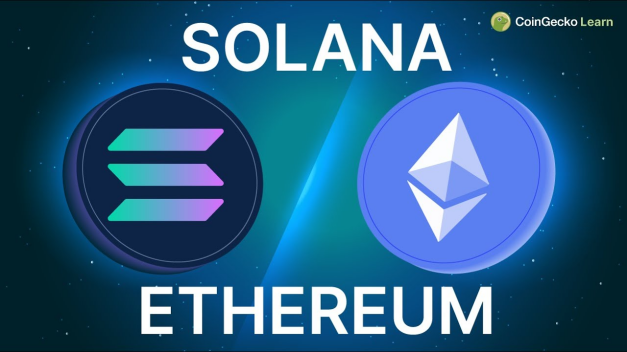
As a high-performance blockchain platform, Solana has attracted much attention in the blockchain industry. Compared with other blockchain platforms, Solana has unique advantages and characteristics. This article will deeply compare the performance, cost and ecosystem of Solana with other major blockchain platforms such as Ethereum, Binance Smart Chain and Polkadot, and analyze its advantages and future development direction.
Performance Comparison
Performance is an important indicator for measuring blockchain platforms, including transaction throughput, confirmation time and latency performance.
Solana: Solana's core advantage lies in its high-performance network, which is able to process thousands of transactions per second. Its unique Proof of History (PoH) protocol and Tower BFT consensus algorithm provide efficient time sorting and fast consensus, which greatly improves transaction confirmation time and latency performance.
Ethereum: Ethereum is the first blockchain platform to support smart contracts, but its performance bottleneck has always been a problem. Currently, Ethereum 1.0 has low transaction throughput and high transaction fees. The launch of Ethereum 2.0 is expected to solve these problems and improve network performance through sharding and PoS consensus mechanism.
Binance Smart Chain: Binance Smart Chain (BSC) achieves high transaction throughput and low transaction fees by introducing the PoSA (Proof of Staked Authority) consensus mechanism. Although BSC provides high performance, its relatively low degree of decentralization has been questioned.
Polkadot: Polkadot achieves high performance and high scalability through sharding technology, and its NPoS (Nominated Proof of Stake) consensus mechanism provides efficient block generation and confirmation time. Polkadot's innovation lies in its cross-chain interoperability, but its overall performance still needs to be verified by more practical applications.
Cost Comparison
Cost is an important consideration for users to choose a blockchain platform, including transaction fees and development costs.
Solana: Solana's low transaction fees are one of its major advantages, allowing users to trade and operate at a lower cost. Its efficient smart contract architecture and development tools (such as the Anchor framework) also reduce development costs, attracting a large number of developers and projects.
Ethereum: Ethereum's transaction fees are high, especially when the network is congested, users need to pay high gas fees. Although Ethereum 2.0 is expected to reduce transaction fees, users will still face high costs during the transition period.
Binance Smart Chain: BSC has low transaction fees and is suitable for small transactions and high-frequency trading users. Its PoSA consensus mechanism reduces transaction costs, but the relatively low degree of decentralization may cause trouble for some users.
Polkadot: Polkadot has relatively low transaction fees, and its sharding technology and cross-chain interoperability provide high cost-effectiveness. However, Polkadot has high development costs and requires more development resources and expertise.
Ecosystem Comparison
Ecosystem is an important part of the blockchain platform, including decentralized applications (DApps), decentralized finance (DeFi), and non-fungible tokens (NFTs).
Solana: Solana's ecosystem has expanded rapidly, covering multiple fields such as DeFi, NFT, and Web3. Its high-performance and low-cost network has attracted a large number of developers and projects, such as flagship projects such as Serum, Raydium, and Audius.
Ethereum: Ethereum is the leader in the blockchain industry and has the richest and most diverse ecosystem. Its DeFi and NFT ecosystems are very large, attracting a large number of users and developers. However, Ethereum's high transaction fees and performance bottlenecks limit its expansion capabilities.
Binance Smart Chain: BSC's ecosystem has developed rapidly, especially in the DeFi field, attracting a large number of projects and users. Its low cost and high performance make BSC one of the preferred platforms for DeFi users, but its degree of decentralization is questioned.
Polkadot: Polkadot's ecosystem is gradually expanding, especially in the field of cross-chain interoperability. Its innovative cross-chain technology has attracted many developers and projects, but its overall ecosystem scale still needs further development.
Conclusion
Solana, as a high-performance blockchain platform, has unique advantages in performance, cost and ecosystem. Compared with Ethereum, Binance Smart Chain and Polkadot, Solana's high performance and low-cost network provide users and developers with an ideal operating environment. In the future, with the continuous advancement of technology and the expansion of the ecosystem, Solana will continue to play an important role in the blockchain industry and provide more efficient, secure and decentralized blockchain services to global users.